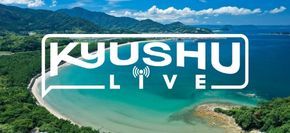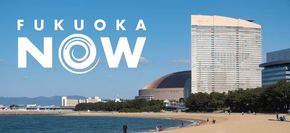Living in Itoshima
What better way to find out what living in Itoshima is really like than to speak to others who have made the move? Four people from very different backgrounds who settled here from other parts of Japan or overseas share their experiences.
This report is the second of a two-part installment. Be sure to read the first part “Itoshima – One of the Most Liveable Small Cities in the World”
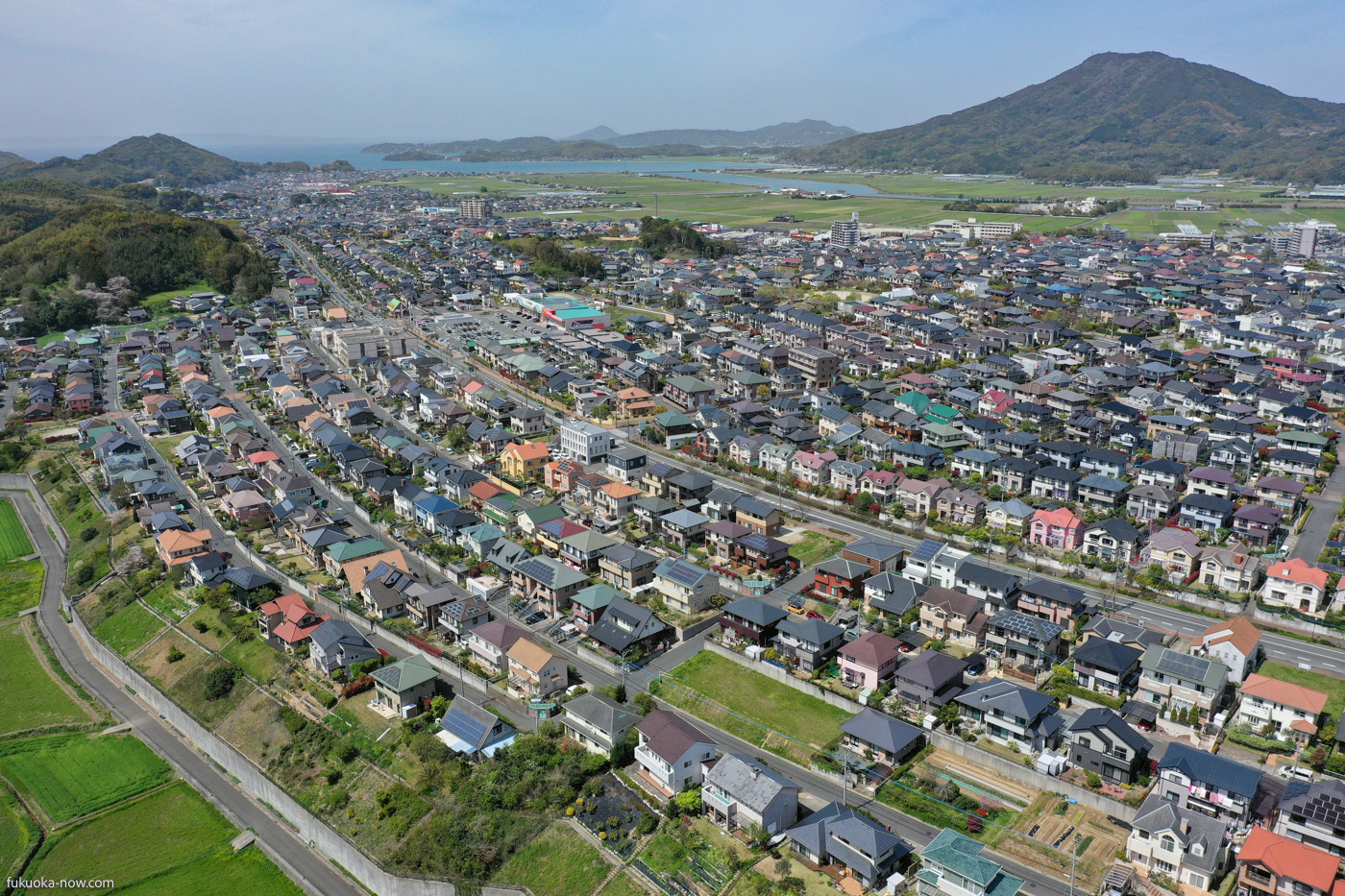
Douglas Weber
Originally from Los Angeles, Douglas first came to Fukuoka in 2001 to take classes at Kyushu University, practice pottery, and broaden his horizons. It was an in-between year while he finished a degree in mechanical engineering at Stanford University. It was also when he first discovered Itoshima’s unforgettable beaches.
Years later, memories of swimming in the sea and hanging out with friends at the beach would draw him back. After working on product design at Apple, he went on to develop his own line of high-end coffee-making equipment, Weber Workshops, as well as a second brand, Kamakiri Workshop, crafting unique wallets, phone straps and other accessories. The move gave him the freedom to decide where to build his home and business, and he chose Itoshima.
Today, Doug’s Itoshima workshop is where he comes up with designs, prototypes products, and mucks around building anything and everything. Being based in the countryside hasn’t hampered his ability to grow his business: fiber-optic internet allows him to collaborate with engineers and other staff in Taiwan, while Japan’s notoriously fast couriers deliver any parts he needs. And when it comes to making his monthly work trips to Taipei, Fukuoka’s international airport is less than an hour away.
With property both in the mountains and by the sea, Doug says he found his ideal work-life balance in Itoshima. When staring at a screen becomes too much, he can step out of his workshop and walk through a forest and onto the beach to swim, surf, or simply catch the sunset.
One thing Doug would like to see more of is truly organic farming: local growers could still use fewer chemicals on their produce, or even better, none at all. He also hopes local authorities will take measures to protect Itoshima’s biggest asset, its nature, and to attract new life and jobs to its traditional port towns.
He says he’s encouraged by the number of fellow creatives setting up studios in Itoshima. And he looks forward to others following suit, from Japan or overseas: “They don’t need to be artists, or popular, but I’d like to see more people doing really challenging things move to Itoshima.”
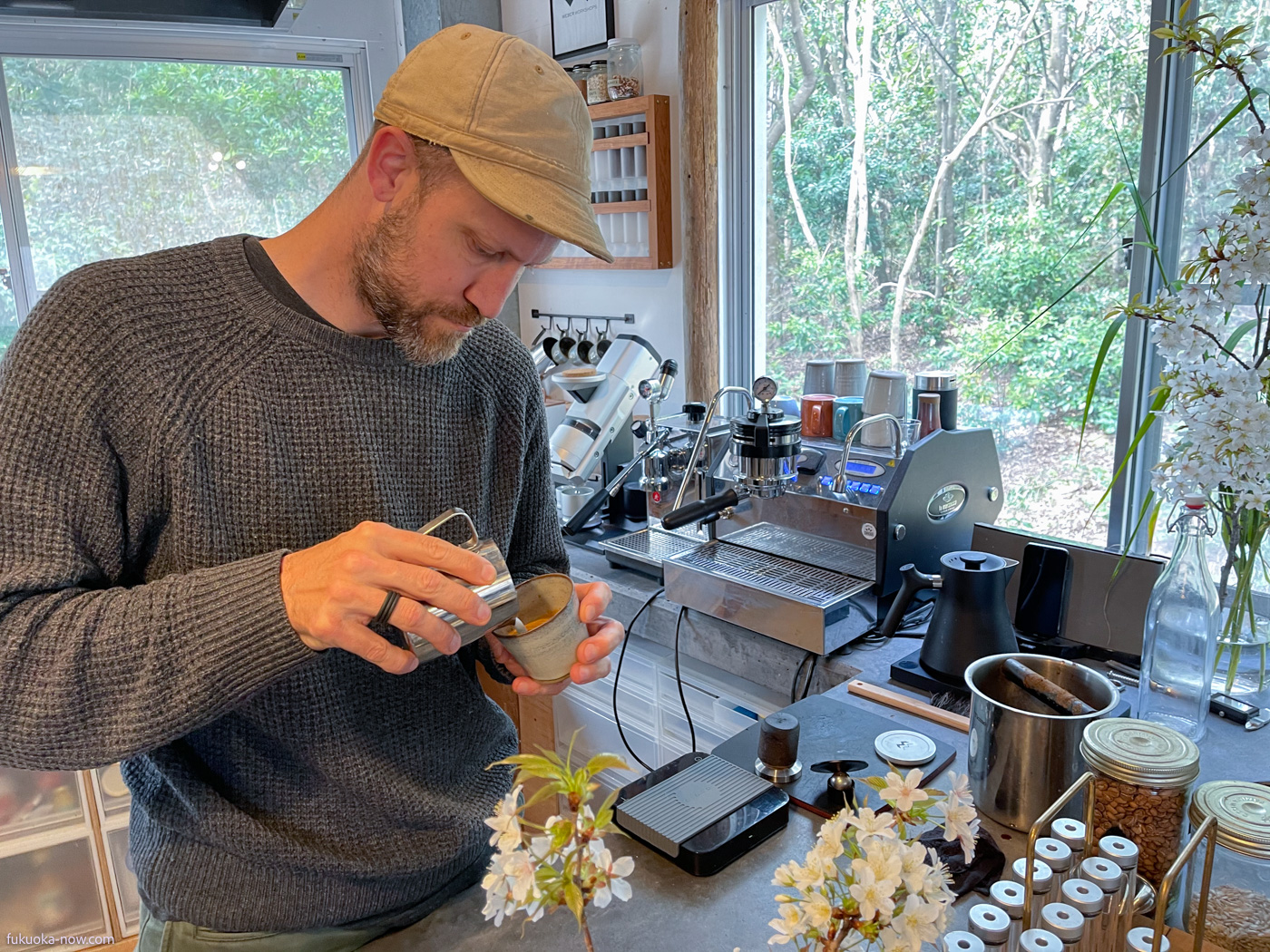
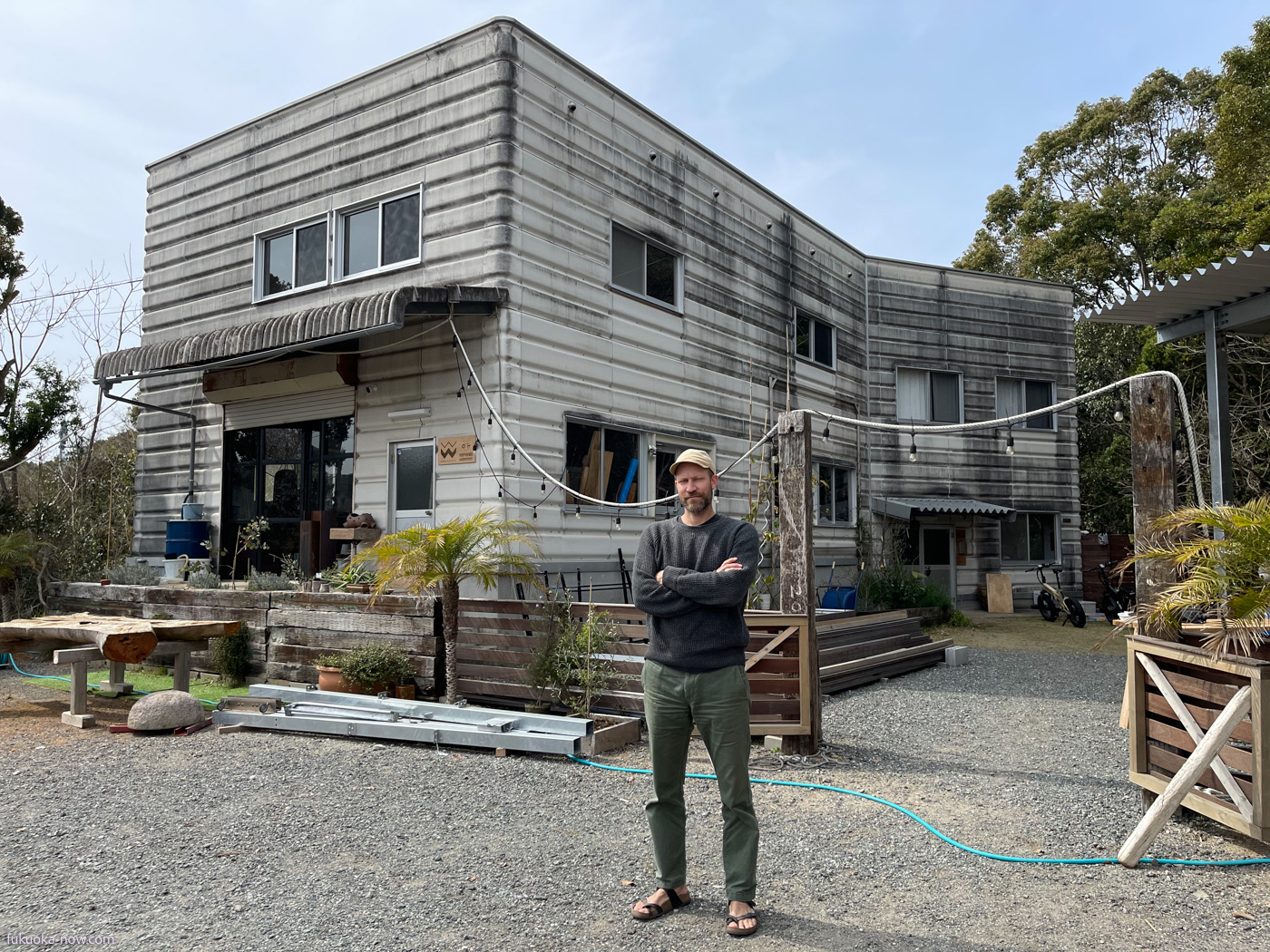

Kenji Sekine
Born and raised in Kanagawa, film producer and distributor Kenji Sekine founded his company United People in 2009, with the mission of addressing social issues through cinema. “Films can touch people’s minds and hearts and make them initiate actions, to discover what we can do to solve these problems,” he explains. “We have introduced over fifty films so far. And through our film network called cinemo, anybody can host a screening and share its message. And after the screening, they might have a discussion, become friends, and start some projects. Maybe a fundraiser for this cause, or let’s get together and start a petition. So changes are happening through our films.”
After living in Yokohama for a decade, he moved to Fukuoka seeking a more relaxed environment and to be closer to other parts of Asia for the expansion of his film business. He visited Itoshima often during that period, and after a year in Costa Rica, Kenji came back to set up his home and business here.
In August 2020 he and his family moved into their new home steps from a sandy beach, and brought the United People office and employees with them. The pandemic has temporarily disrupted Kenji’s routine, but normally he would travel to Tokyo twice a month and overseas every other month to attend film festivals. Other than that, he finds it easy to conduct his business from Itoshima: the only inconvenience that he could think of was the distance to the rail station and the occasional infrequency of trains.
So far life in Itoshima is pretty much what he hoped for. He loves living next to the beach, where he enjoys walks and fishes. But he’s been surprised to find how busy daily life in Itoshima keeps him, whether he’s cutting down bamboo behind his house or picking up plastic waste on the beach. As someone relatively young and fit in an area where many residents are older, he was quickly drafted into several community volunteer schemes, including a monthly neighborhood cleanup crew and a project to clean a monument located high on a local hill.
What might Kenji do if he were made mayor and could start any three projects he liked? He says his first priority would be a project to convert the trash that washes up on the beaches into energy. Next he’d open a school to teach sustainable skills to people of all ages, such as growing vegetables organically or making crafts out of local bamboo that would otherwise go to waste. Thirdly, he’d set up a program to attract younger people to settle in the area.
As for tourists, “I’d prefer they didn’t come,” says Kenji with a laugh, mainly because he’s happy to keep Itoshima’s wide-open spaces – and its roads – free of crowds. But he accepts the area is bound to attract more and more visitors, and suggests that organizing outdoor events that showcase the area’s nature could draw people who will appreciate and protect it.
Kenji is one of those people. And after visiting more than 60 countries and living on different sides of the world, he says that Itoshima is now home.
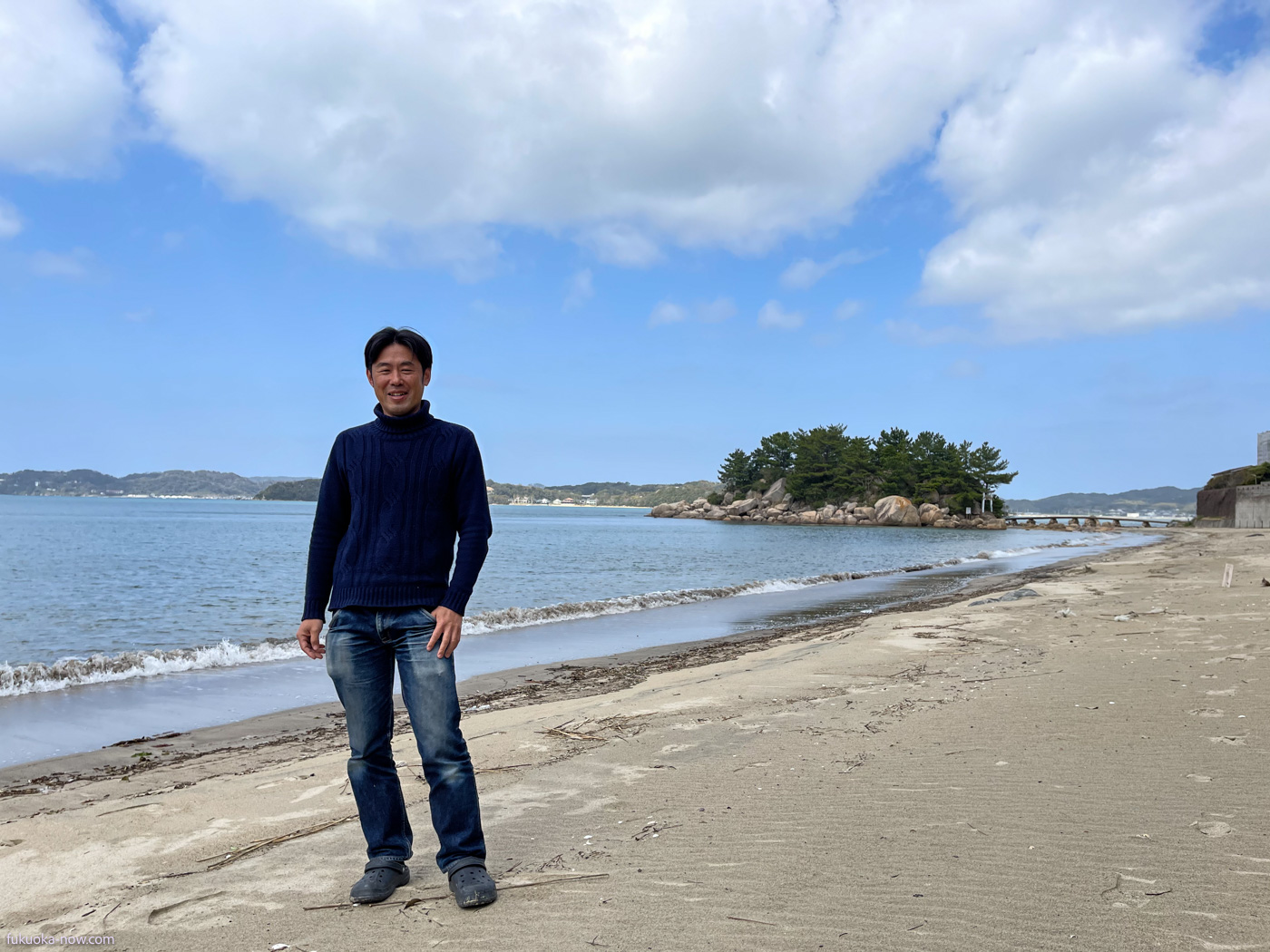
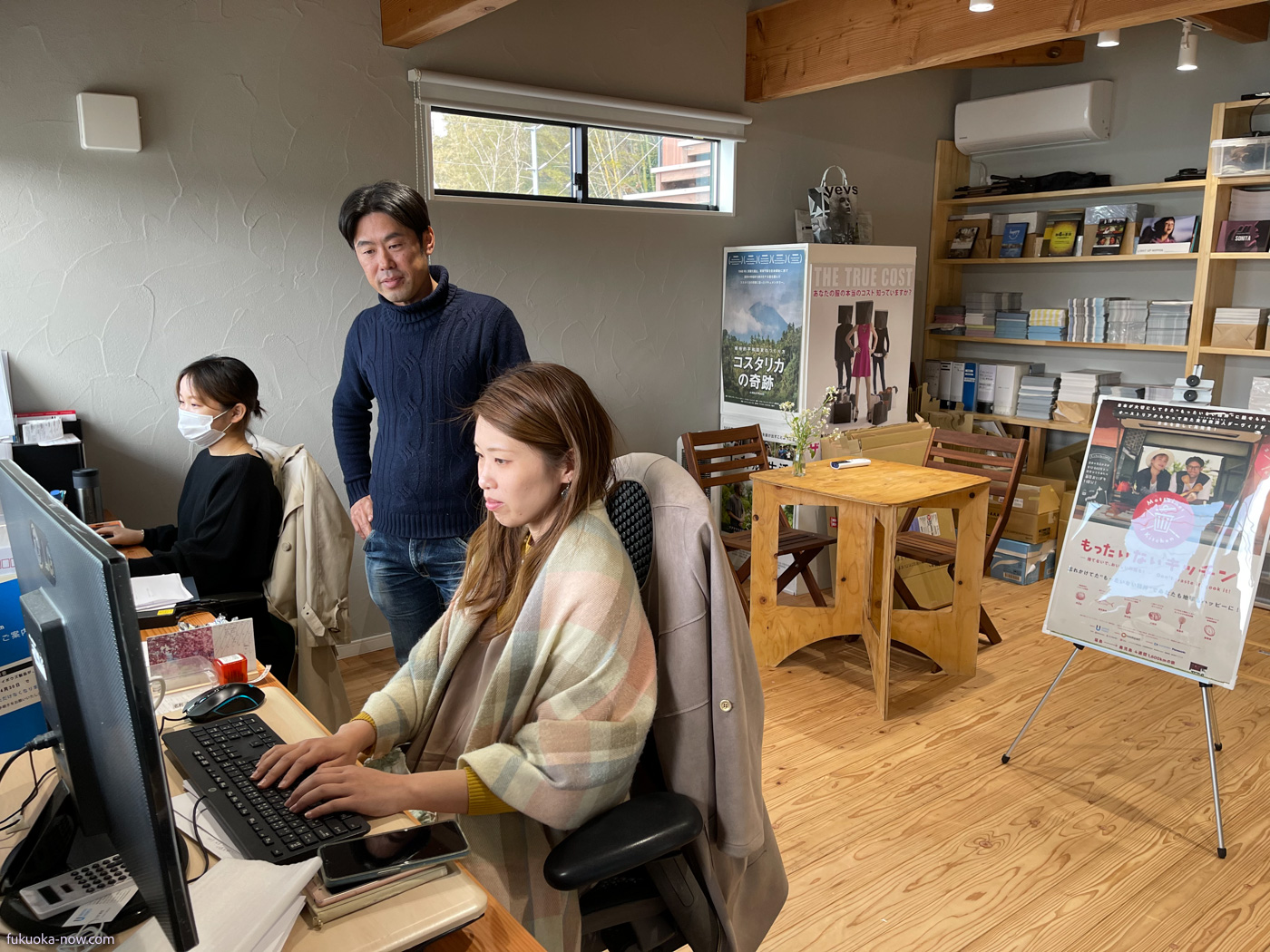
Glenn Kline
Glenn and Arabella, both from Michigan, USA, love to talk about their life in Itoshima. In fact their passion for the place is so sincere it’s infectious. It’s not because they’re freshly arrived in Asia or new to living overseas; on the contrary, they’re seasoned expats who have lived in six countries in the last fifteen years.
How did the couple end up in Itoshima? Glenn’s thirty-year career in venture capital took them to Taipei, Singapore and mainland China, and after years in huge urban sprawls, they decided they needed a change. Friends suggested Bali and Chiang Mai, but neither had quite the balance of quality of life, nature, culture and hospitality they felt in Japan. They considered Okinawa, Kagoshima and Miyazaki, but nowhere ticked enough boxes – until they found Fukuoka. Searching for a place to live near the city, they stumbled upon Itoshima and within a year had bought a home with a spectacular ocean view.
Now Glenn, a managing partner of the Trans-Pacific Technology Fund (TPTF), works mostly online, apart from regular trips to Tokyo, Taiwan and occasionally further afield. Arabella, a lawyer by training, spends her time discovering Itoshima and making inroads into the local community.
While many of the neighboring houses are second homes, they say they have made friends nearby and feel extremely welcomed. Living far from the train station and on top of a hefty hill, they’ve found a car to be essential. But it’s only a few minutes’ drive to some of their local highlights, including a market with fresh eggs and organic vegetables, their favorite bakery, and some stunningly beautiful beaches.
Pushed to name some negatives, they say they’re worried about the waste that washes up on nearby beaches, which they plan to help tackle by supporting beach cleanups. And though Itoshima grows fresh vegetables in abundance, they’ve found it can take some effort to source organic produce. They also miss the health-conscious menus it’s easy to find in restaurants in bigger cities. But their only major concern is to see Itoshima preserve its natural beauty as the area becomes more popular. They hope the local government will implement tools such as zoning as Itoshima becomes more popular.
Do they ever miss city life, with its extra conveniences and choices? Whatever they can’t find in Itoshima, it’s available in a short drive into Fukuoka City, Arabella and Glenn say – and they don’t plan on moving anywhere anytime soon.
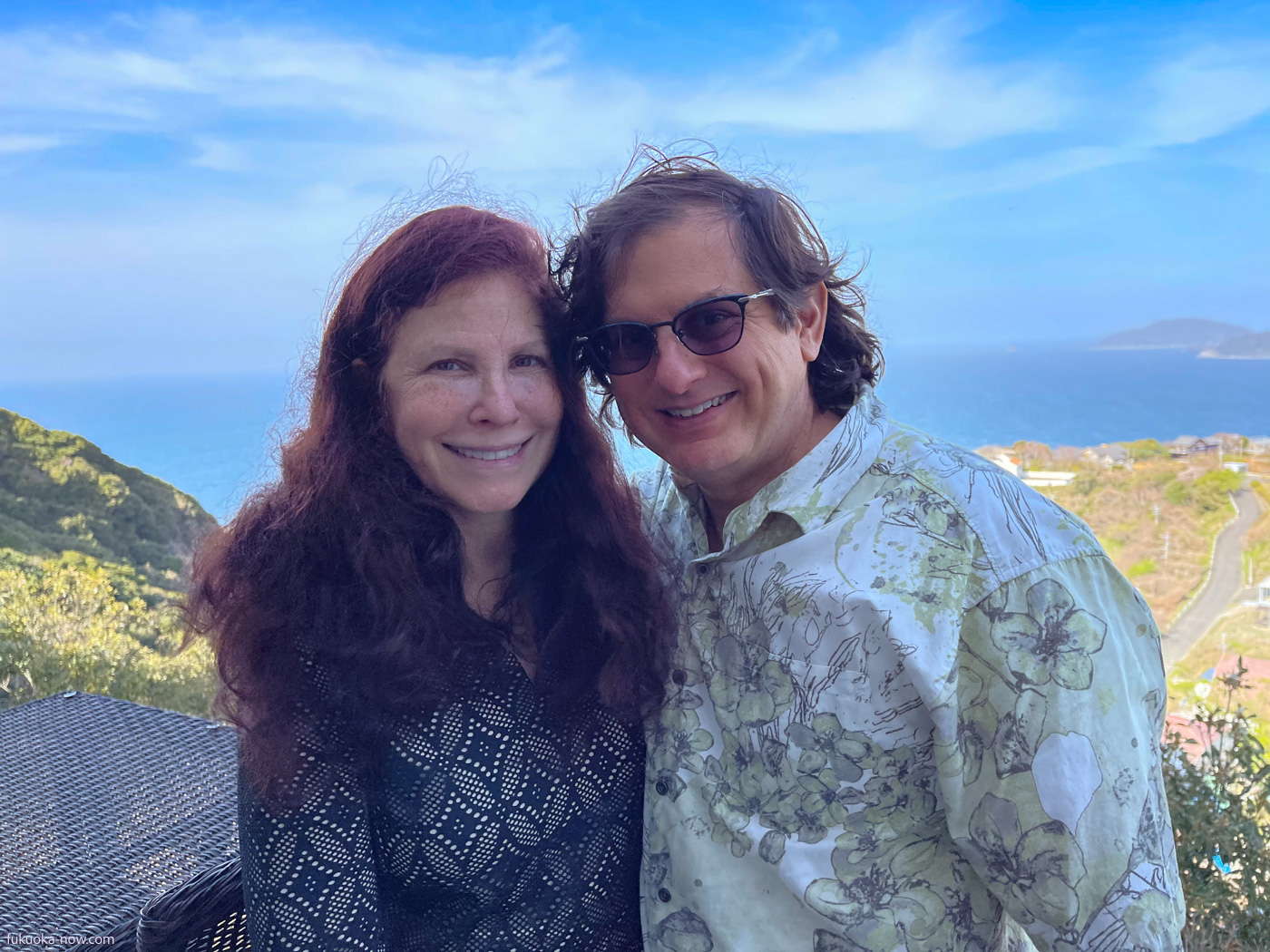
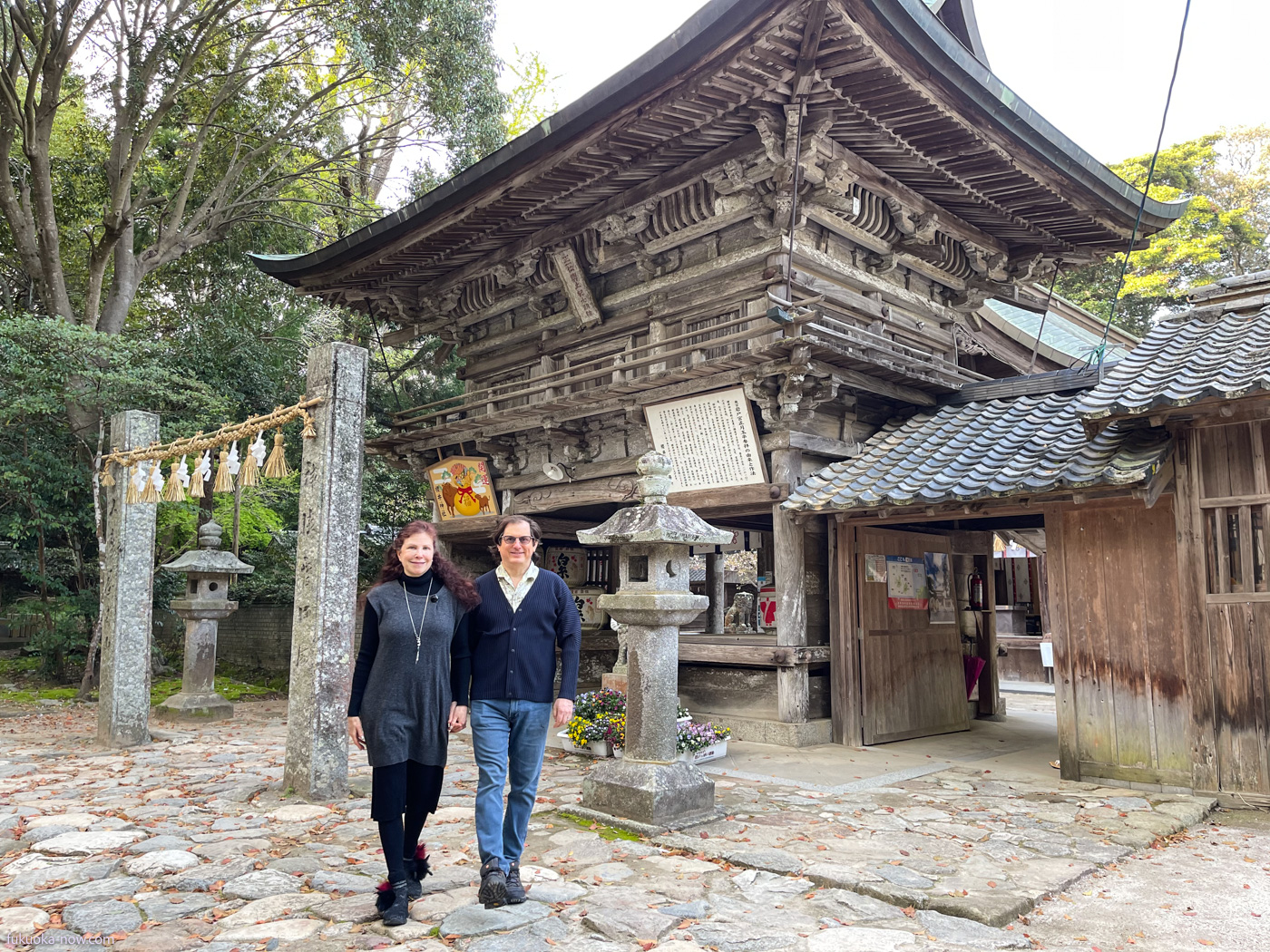
Osamu Tatsuishi
Having grown up on the island city of Amakusa off the east coast of Kyushu, Osamu moved to Fukuoka for university and became part of the local music scene. Eventually he opened his own record shop (and though he no longer runs it, Kalavinka Music is still in business in Maizuru).
But as he watched friends in the music community move out to Itoshima, the idea of leaving the city for a different pace of life became more and more appealing. In 2008, Osamu and his family moved to a home within walking distance of one of its most iconic views, the ‘Wedded Rocks’ of Meotoiwa at Futamigaura beach.
As they threw themselves into growing their own rice and vegetables, Osamu found inspiration right there in his garden. A musician friend had once shown him a speaker crafted from a hollowed-out hyotan, or Japanese bottle gourd, and realizing that he had them in his vegetable patch, he began making his own. Thirteen years later, he sells handmade lamps and speakers from his atelier near Oguchi beach.
Osamu struggles to come up with a bad word to say about life in Itoshima. Even the distance to downtown Fukuoka is just right, he laughs: he wouldn’t want the city any closer. The only negative I could coax out of him was the extra he has to spend on gas now he has to drive more.
He is especially grateful for the creative community he’s found in Itoshima, where other craftspeople welcome and support each other. The area’s reputation precedes it, Osamu says: anyone who says they are from Itoshima will always be welcomed.
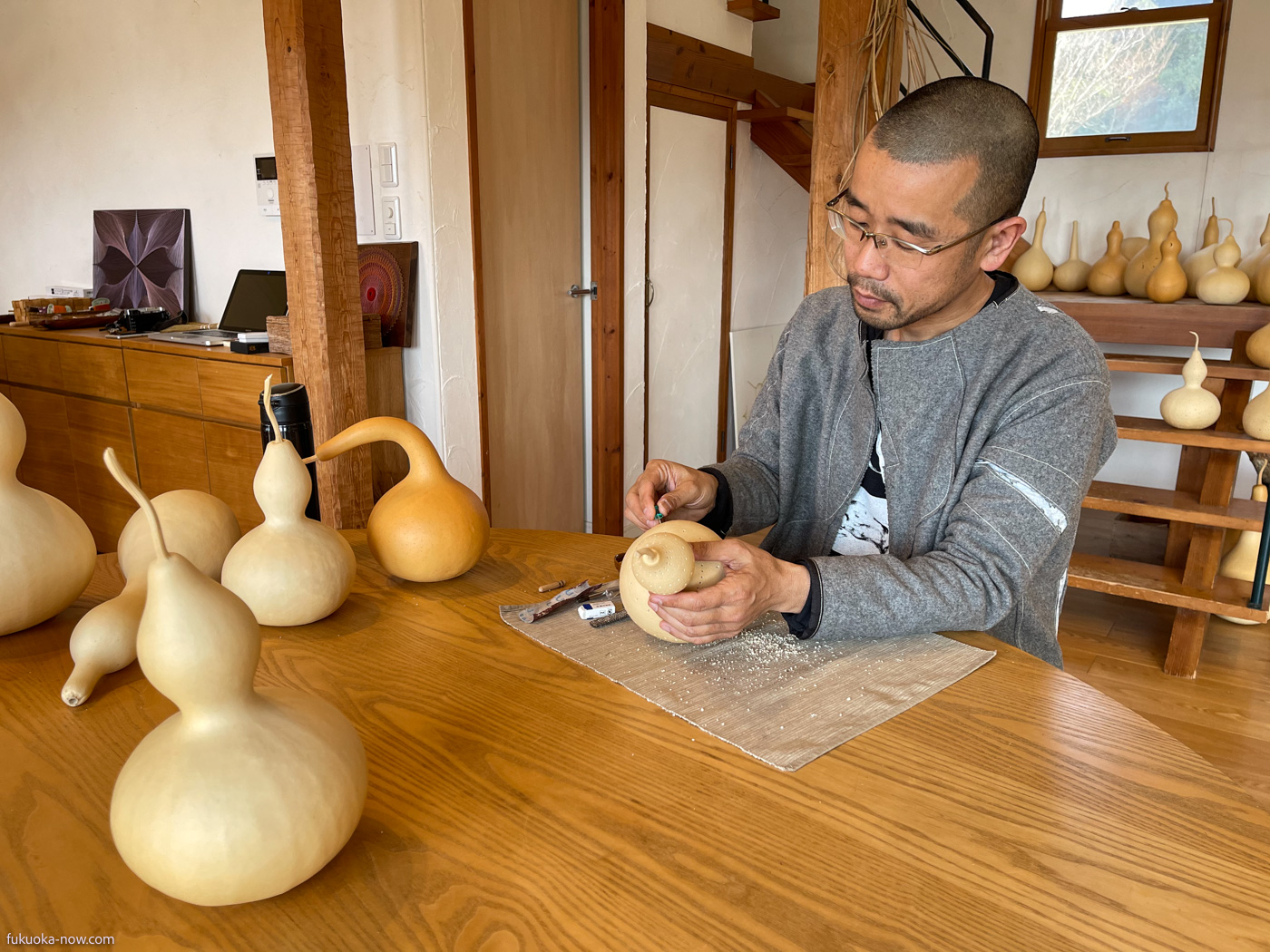

Kyushu University Itoshima Campus – Youth & Expertise
Established as the fourth Imperial University of Japan in 1911, Kyushu University, Kyudai (as it is commonly referred to) is considered as one of the most prestigious research-oriented universities in Japan. With twelve undergraduate schools, eighteen graduate schools, sixteen faculties, five research institutes, a university hospital offering advanced medical care, and libraries that stock more than four million books. The university is home to some 19,000 students and approximately 7,800 employees. In 1991 a decision was made to move its campuses to Itoshima. To be accurate the campus is mostly located within Nishi-ku, Fukuoka City, and not Itoshima City. I suppose it takes its name from being on the Itoshima Peninsula. The new campus was built of mostly undeveloped rural land and boasts the largest area (271ha) of any university in Japan (2nd: Tsukuba University, 3rd: Tokyo University). It wasn’t until 2005 that some classes were actually held there. By 2018 most of the planned construction was completed and moved considered complete. So what does Kyudai mean to Itoshima City. It’s still early days but it seems that a campus of such esteem and scale will provide a constant source of opportunities for collaborations not to mention a base for faculty and students to live. The large number of exchange students has certainly been noticed and welcomed as a dash of diversity into the area.
Map / Web
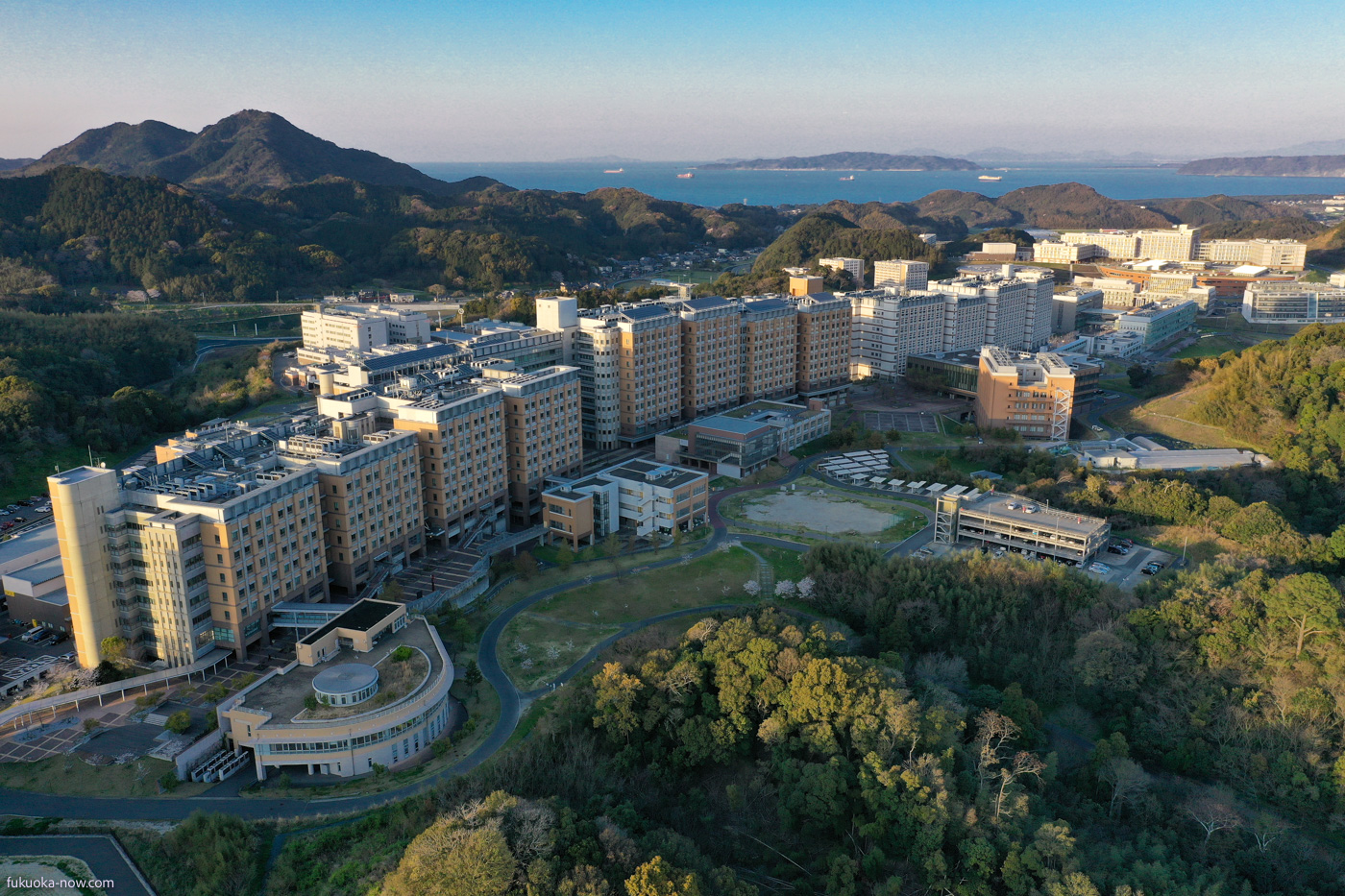
Easy access
The biggest concern about a move to the countryside – understandably – is transportation. The larger the family the more complicated the logistics become, and jaunts into Fukuoka City take some planning, even if it’s right next door. But with trains, buses and a highway, getting around is easier than you might expect.
Train
There are ten stations along the JR Kyushu Chikuhi Line within Itoshima, the main one being Chikuzen-Maebaru Station just five minutes’ walk from City Hall. The Chikuhi Line runs between Meinohama to Karatsu City in neighboring Saga Prefecture, and most importantly, it connects directly to Fukuoka City’s Municipal Subway line. That means some trains from Chikuzen-Maebaru Station travel directly through Fukuoka City, stopping at Tenjin and Hakata Station, before terminating at Fukuoka Airport’s domestic terminal. The ride can be as short as 35 minutes to Tenjin and just 46 minutes to the airport.
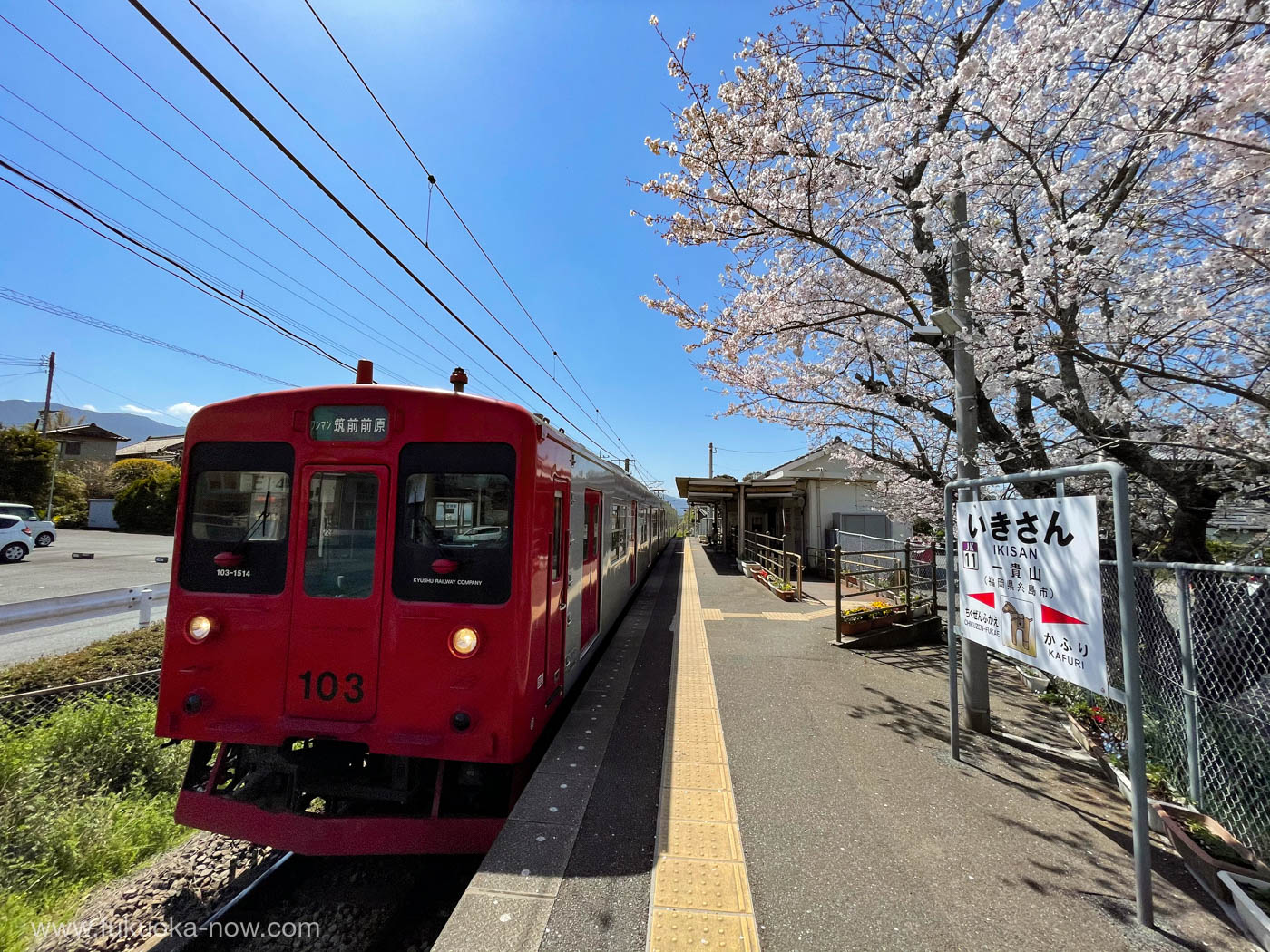
Highway
There are four interchanges along the Nishikyushu Expressway within Itoshima City, with Maebaru interchange the closest to City Hall. Heading east towards Fukuoka City is a toll road that conveniently connects directly to the Urban Expressway, and from there onto the Kyushu Expressway connecting you to the rest of Japan. The drive from Itoshima city center to downtown Fukuoka on the expressway is about 24km and takes just under half an hour in normal traffic. From the Maebaru interchange to Fukuoka Airport is just a few minutes longer. We rarely get caught in traffic jams, except at peak times on summer weekends and long holidays. Just remember that you’ll need to leave the car at home if you plan to drink, so figure out a back-up way to get back home.
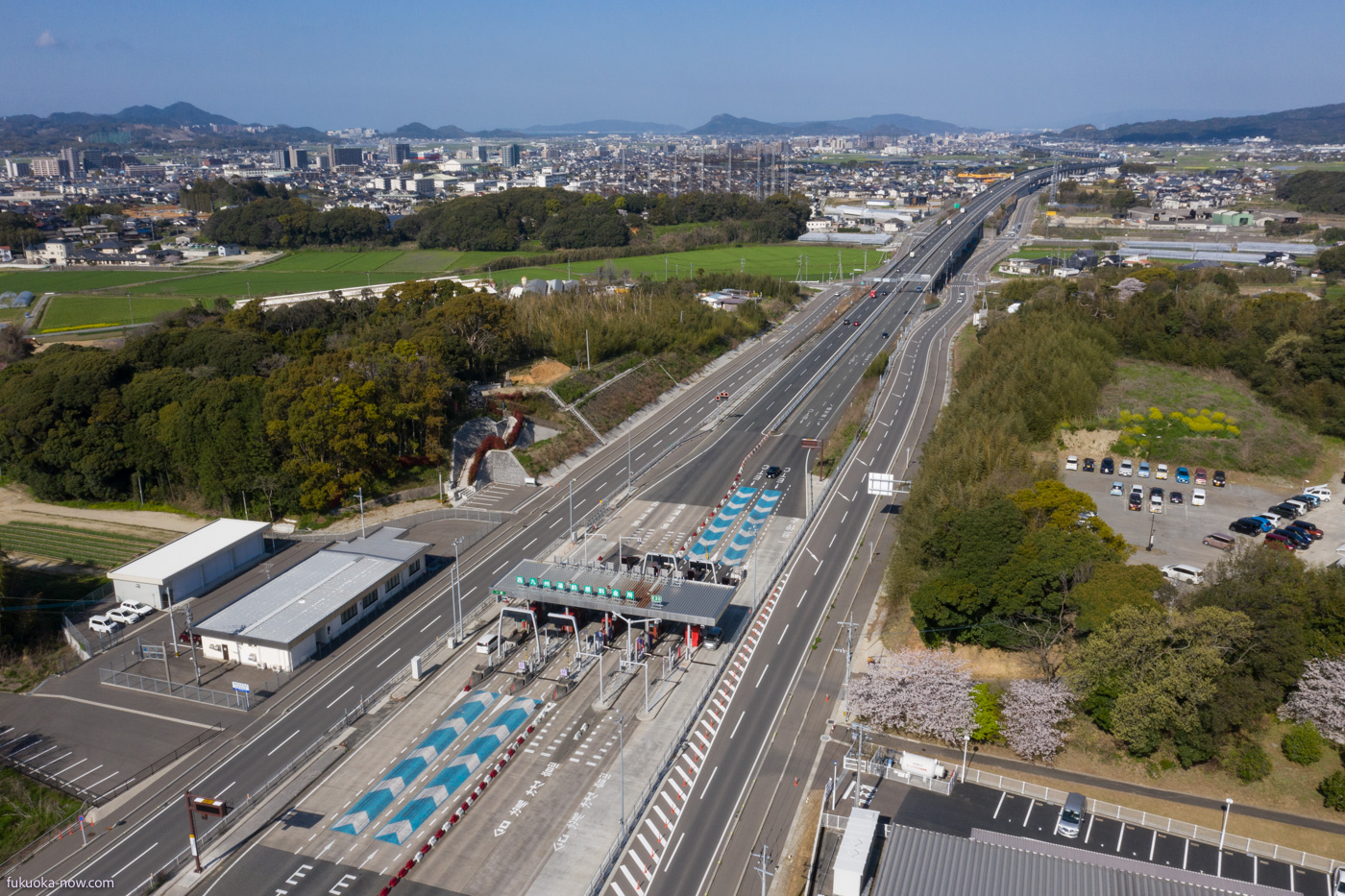
Bus
If you want to enjoy the peace of Itoshima without driving, you’ll find yourself relying on bus services. The Showa Bus Company operates a network of routes that cover most areas, though you’ll be travelling on their schedule and at their speed. Look into your options and bear in mind that the further out you live, the bigger the impact on your mobility.

Food culture
Itoshima has an ever-expanding choice of places to eat. While beach cafes and seaside seafood joints are popular with daytrippers cruising the coastal roads, some of the most interesting restaurants are inland – including some offering organic ingredients fresh from nearby farms and inventive vegan cuisine.
Kissa Hiru Neko
After 12 years running what many considered one of Fukuoka’s finest vegan restaurants, Atsuki and Makikio Katsube reopened their kitchen in a former barbershop in Nojo-Tanaka, Itoshima. Today they serve an 100% vegan dishes, desserts and drinks inside the colorfully renovated spot. Ingredients are organic where possible and almost entirely locally sourced. Lunch platters include Japanese and Western-style vegetable sides, salad, soup, organic genmai rice, and soy meat karaage (faux deep-fried chicken). Also popular are their soy and tempeh burgers, and a new addition since their move to Itoshima, bean burgers. Pasta and pizza of the day are available from 14:00 onwards too. Even non-vegans will find plenty to enjoy.
Map / Web
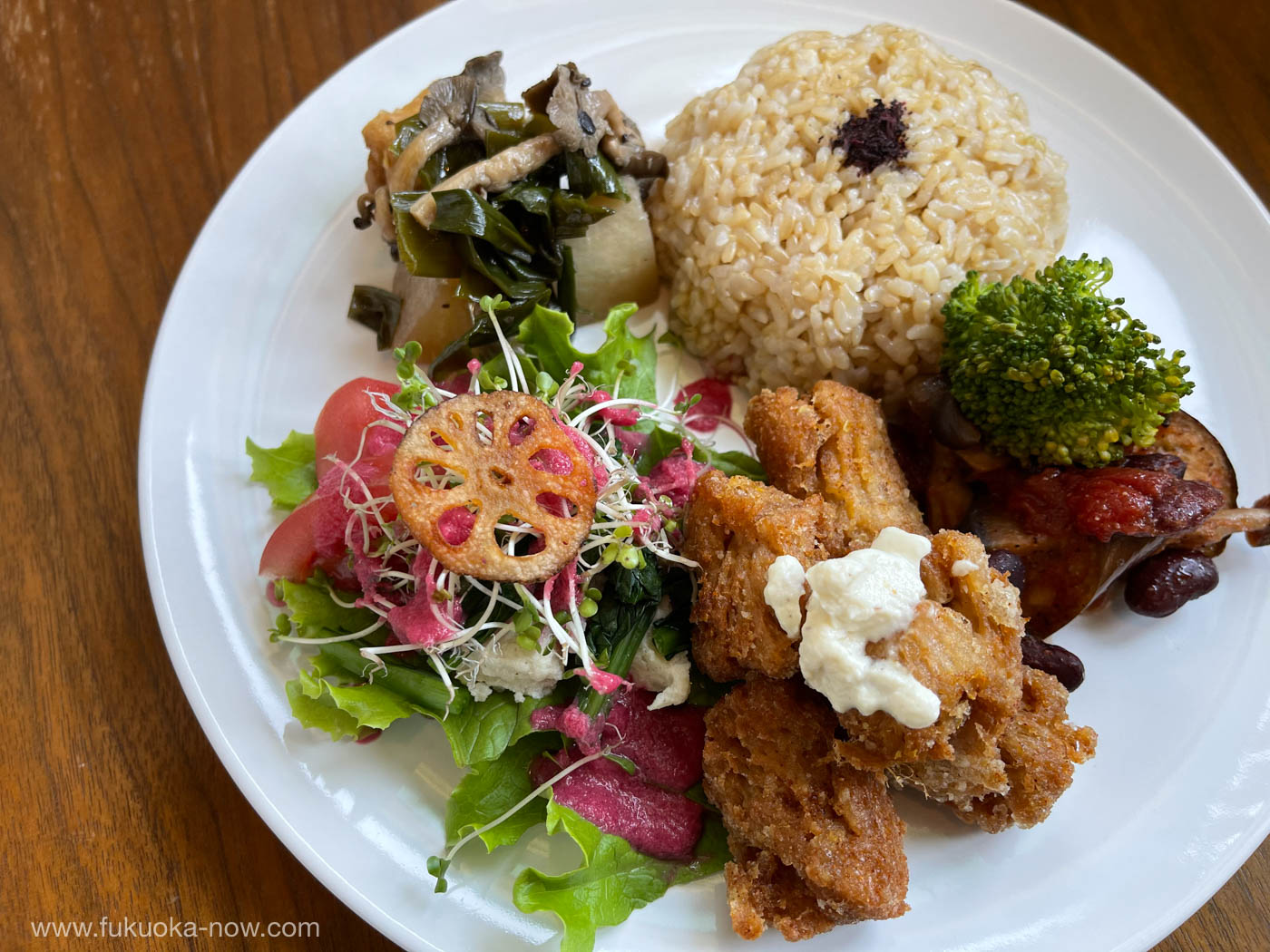
Akka Punto Effe
After renting a plot of land in Itoshima for years to grow vegetables for their Italian restaurant in Fukuoka, chef Hiroshi Fujita and his wife Hiroko moved their home and kitchen out here altogether. Weekend farming only whetted their appetite for the countryside, and now they aim to offer the full farm-to-table experience to their guests. Vegetables come fresh from their fields, their hens provide the eggs, milk is from their goat, fish come from the nearby fishermen and gibier from the local hunter. All of it goes into fabulous Italian dishes, served a la carte or as a set menu at lunch or dinner. Above the restaurant are two tastefully appointed rooms with ensuite baths and views of the valley and distant seaside. Guests interested in getting a closer look at what goes into their food are welcome to pick fruit or help with vegetable planting.
Map / Web
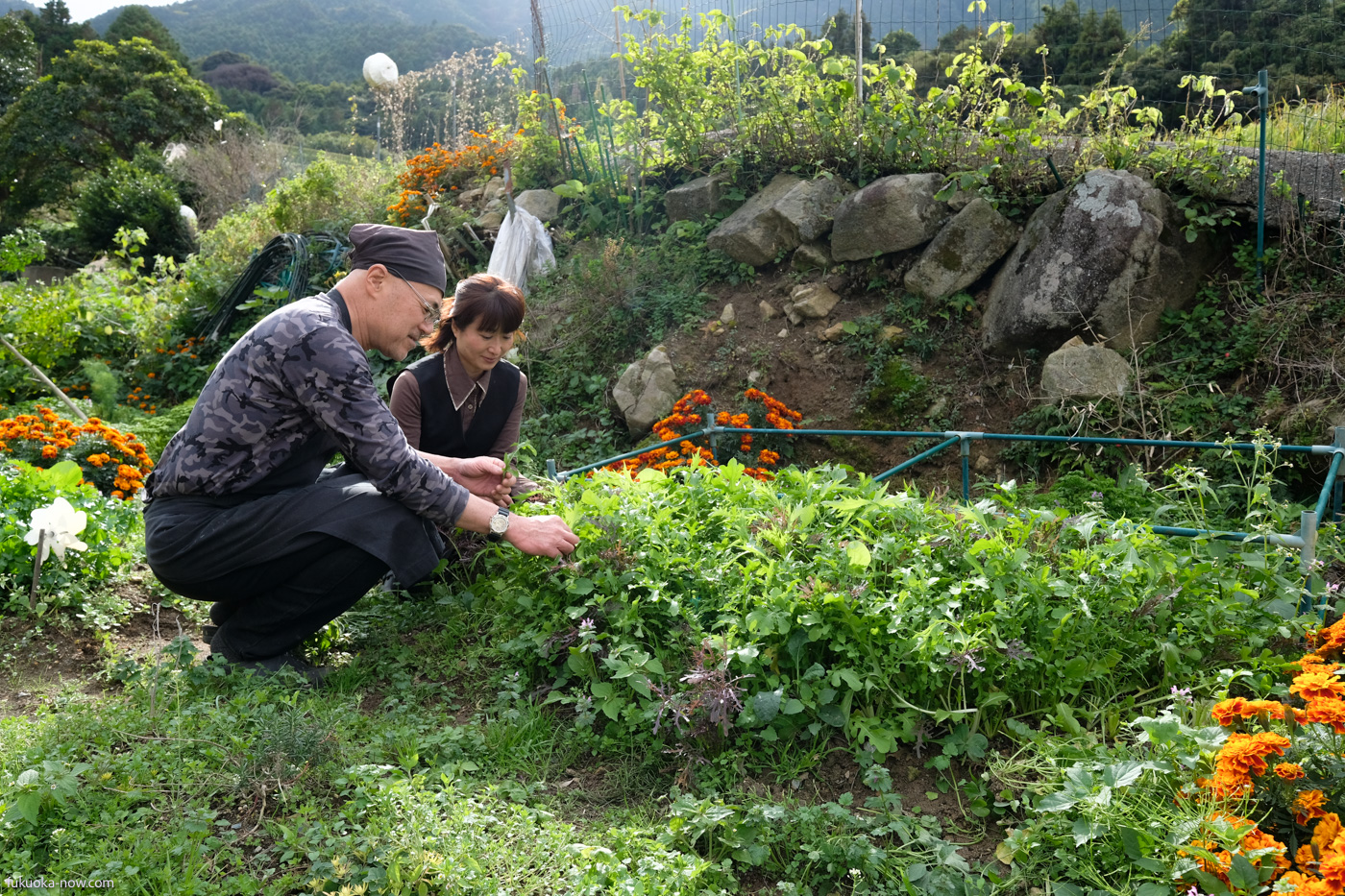
Daily life in Itoshima
People moving out to Itoshima might worry that they won’t be able to find everything they need nearby, but the area has a surprisingly broad range of retailers. With Fukuoka City nearby, and couriers and online shopping to deliver anything you can’t find readily, you’ll find that daily life is just convenient enough.
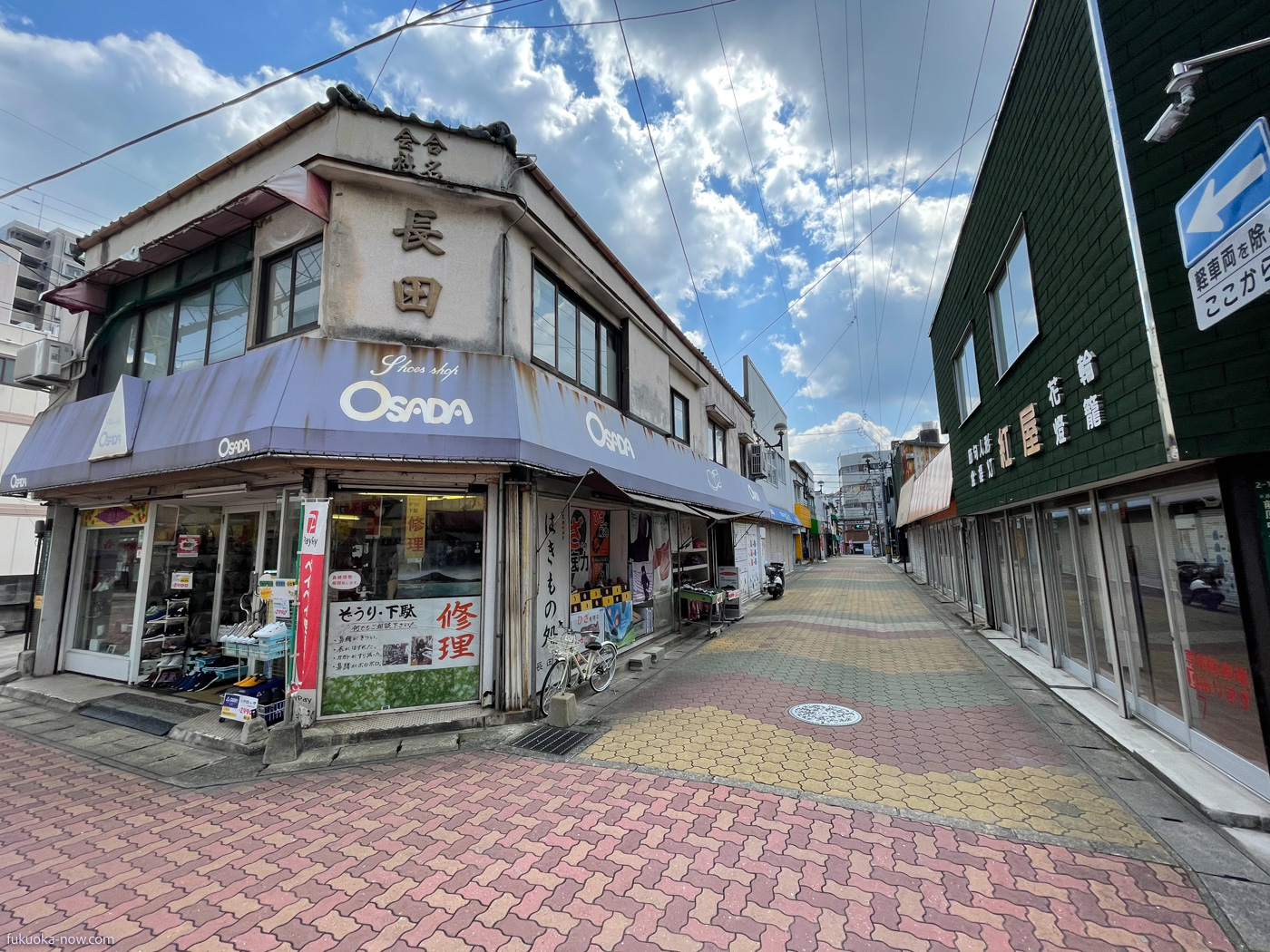
Big box shopping too
I’ve focused so far on Itoshima’s biggest selling points: its nature and rural style of life. But neither my wife nor I are country folk, and even if we were, it’s still convenient to have a selection of bix-box outlets within a short drive. Stores like AEON come in handy when you’ve run out of peanut butter, tonic water or muesli – things you can’t find at local markets. Meanwhile living in Itoshima pretty much guarantees you’ll be doing some gardening or DIY, and you’re never far from a hardware center such as Nafco. Need a swimsuit all of a sudden and don’t feel like driving into Fukuoka? Itoshima has a UNIQLO too
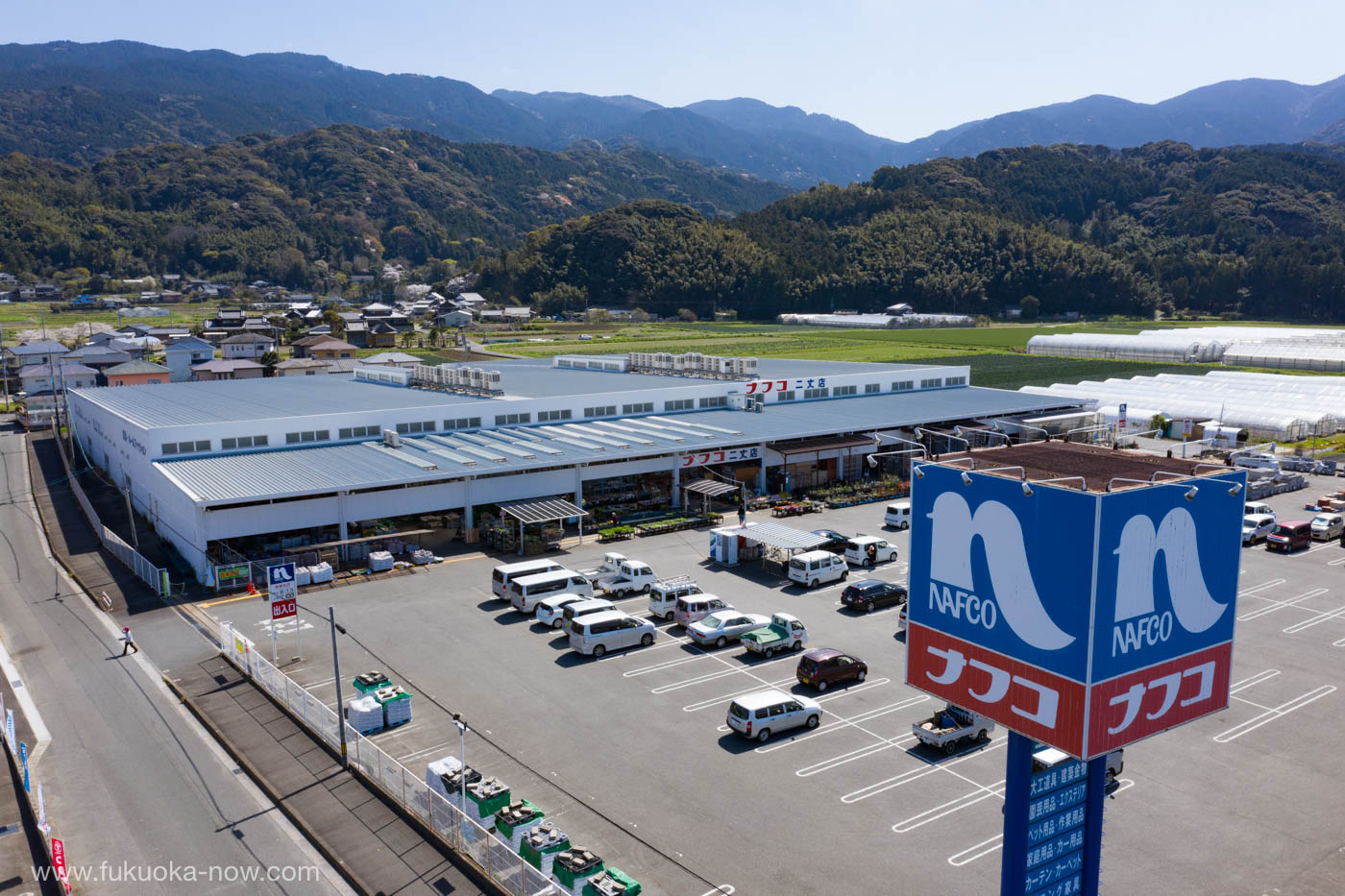
Specialty Shops
But thankful shopping options are not limited to the extremes: famer’s markets and big box retailers. There are plenty of specialty shops that fill in the gaps with and further reduce the need or desire to haul into Fukuoka for shopping. Toraya Meat Center (Tiger Meats) is a butcher shop that considering it’s location, surrounded by rice fields, offers a surprising variety of meats including local, as well as national brands and even some very affordable imported meats. They even have a good selection of game, and even less common items including ostrich, snake. As another example, Analog Craft Chocolate is an independent bean to bar chocolatier just steps from Chikuzen-Maebaru Station where the laborious bean to bar seven-step process begins with roasting single-origin cacao beans, then refining them for 36 hours, and then winnowing, melanging, tempering, and finally packaging.
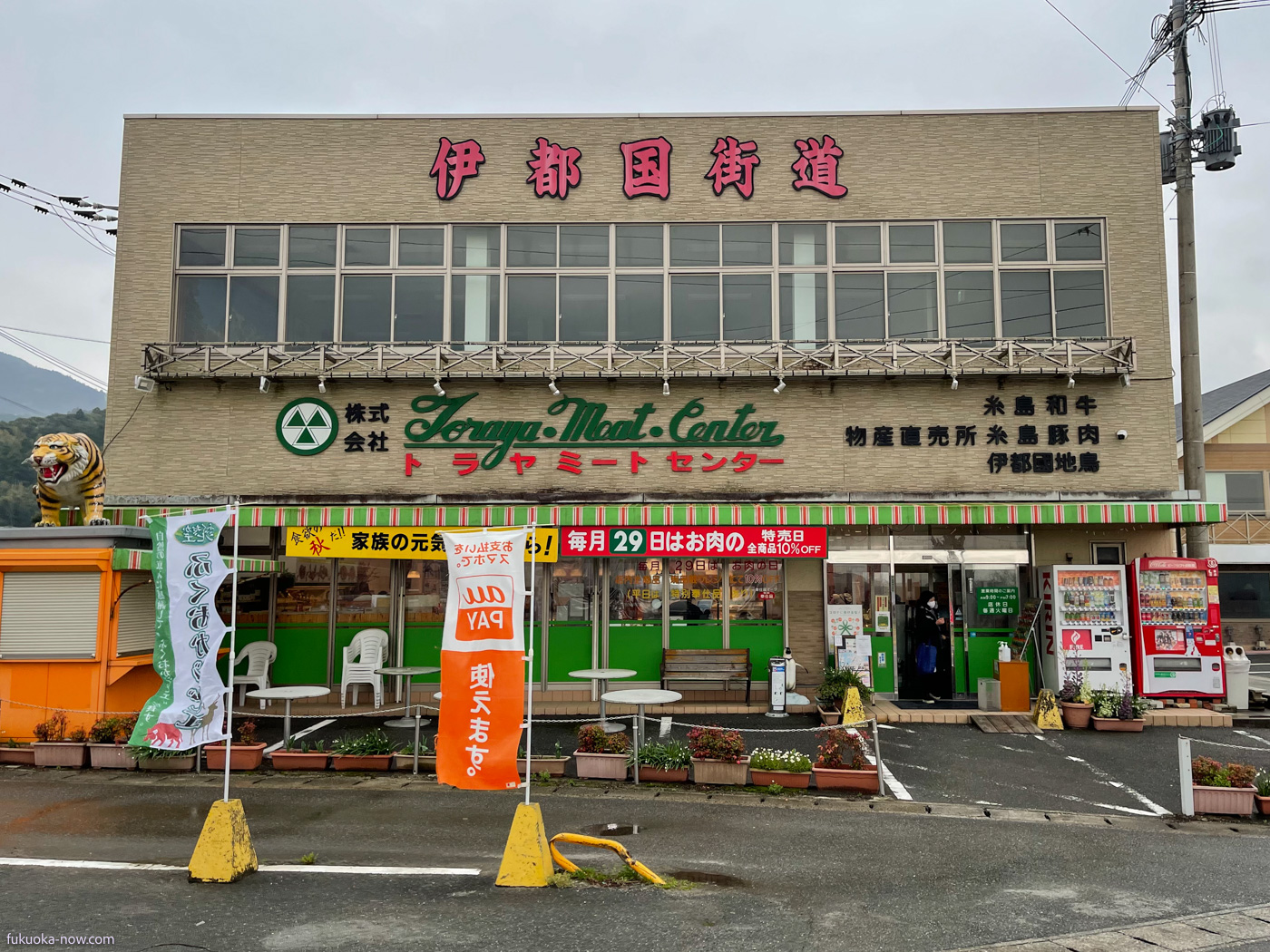
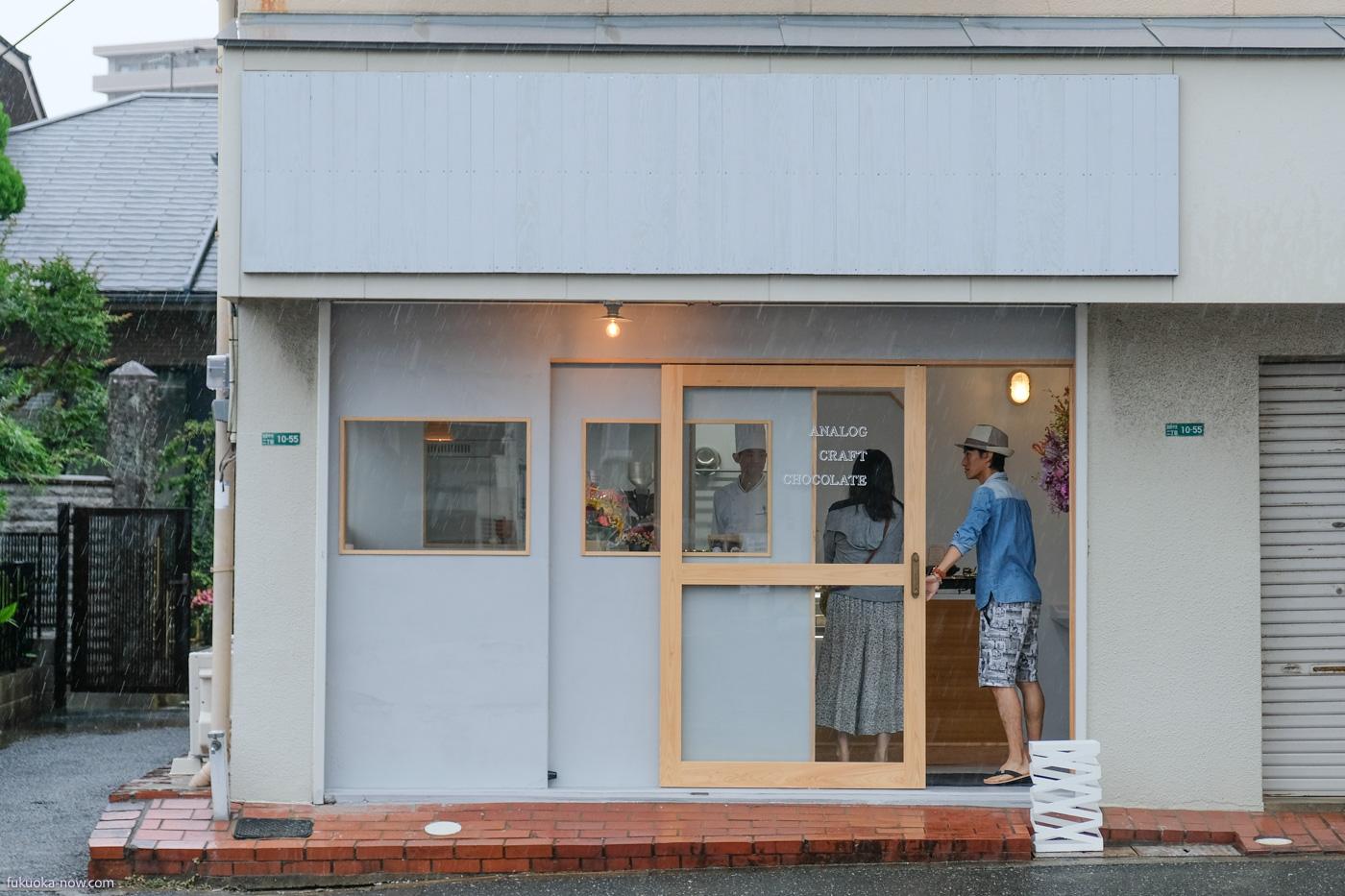
Analog Craft Chocolate
Map / Web
Power Spots
Itoshima has a number of what the Japanese call “power spots”: auspicious places with natural or spiritual resonance. Here are three sites where you’ll find the area’s energy at its strongest.
Sakurai Shrine
In 1625, Sakurai Shrine was built to enshrine the spirit of Ise Jingu. Visit on a weekday morning for some moments of tranquility, listening to the wind whistle through the tall trees and breathing in the fresh forest air: there’s something undeniably healing about this place. Be sure to walk around and explore all corners of the grounds.The shrine also keeps Meotoiwa, the ‘Married Rocks’ shrine in the sea off nearby Futamigaura Beach.
Map / Web
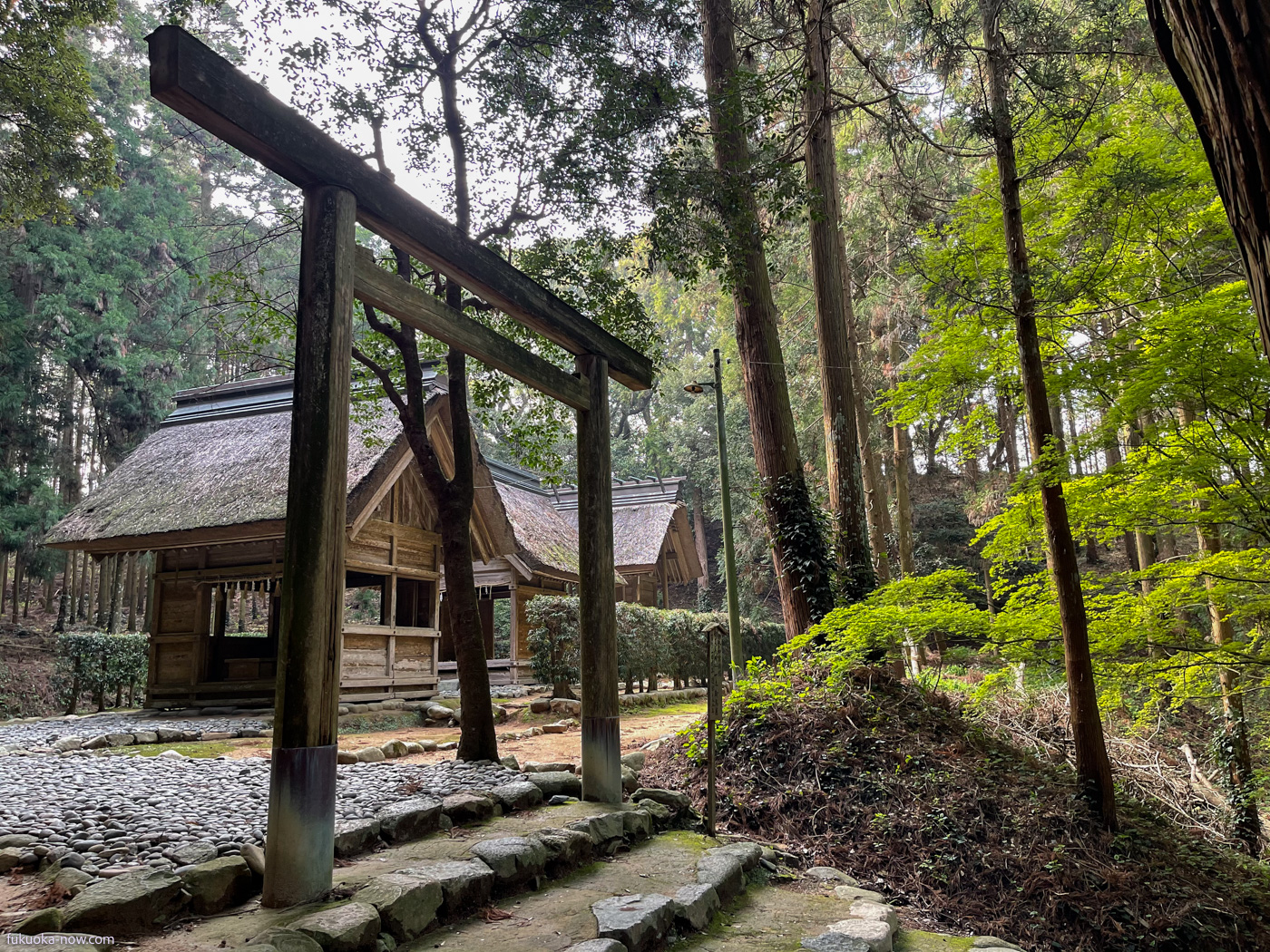
Shinseki Rock
A short walk from Kamiari Shrine, in the middle of a bamboo forest, the mysterious Shinseki “God’s Rock” sits in solitude. According to legend, when Empress Jingu visited the area around the 2nd century, a purple-colored cloud formed in the sky above. Not much else is known about this boulder or how it came to be here, though the remains of important tombs from the 4th and 5th centuries are nearby. Even if you don’t believe in spiritual powers, this is a puzzler.
Map / Web
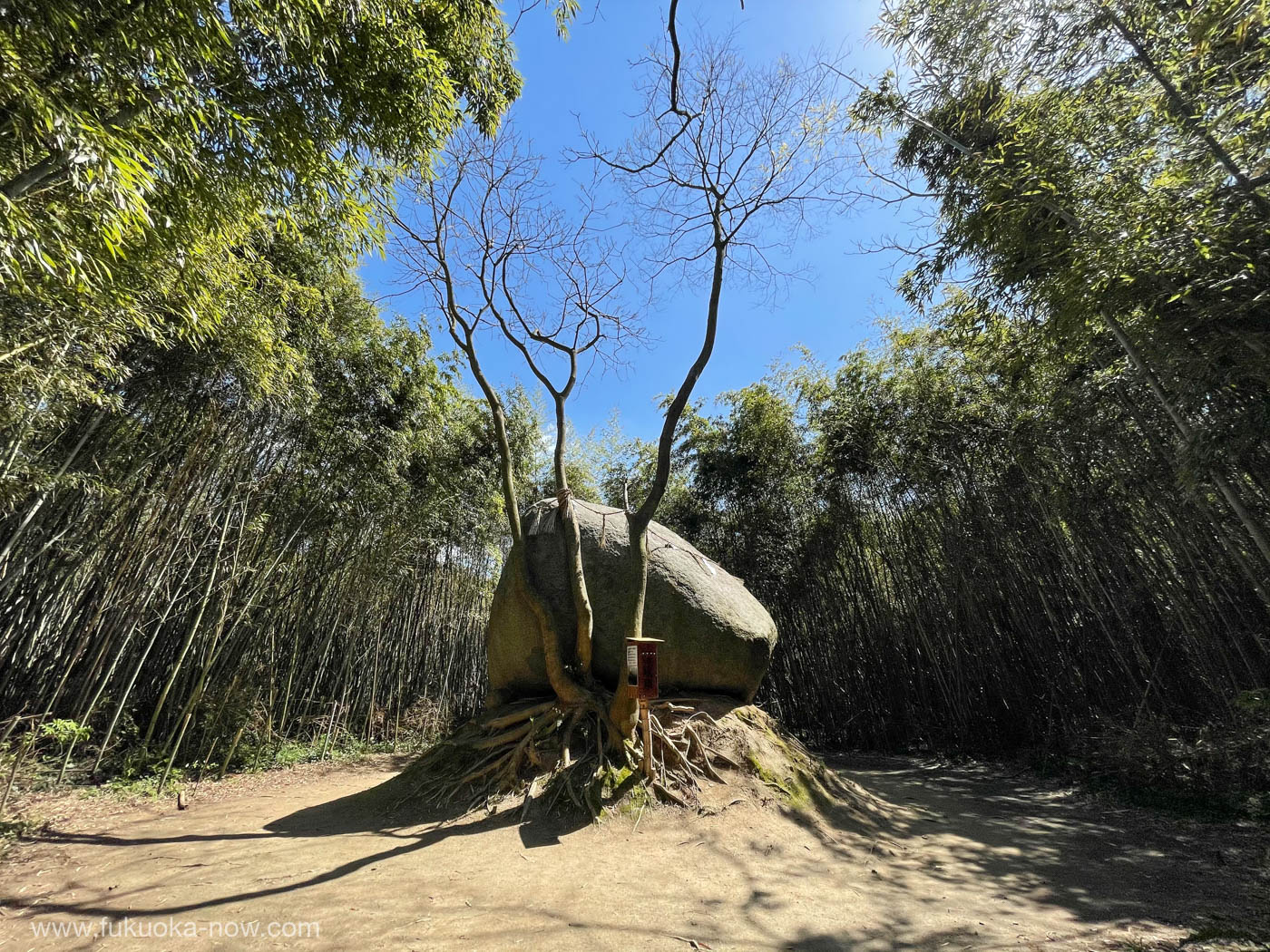
Keya no Oto
Accessible only by boat, this dramatic basalt sea cave faces into the Genkai Sea’s rough waves. With geometric columns of pitch-black volcanic rock measuring 64 meters high and 90 meters deep, it’s one of the largest caves of its kind in Japan. You can get up close on short boat tours between mid-March and November; if the water is calm enough, your guide will steer you inside the cave itself. Geologists may be able to explain why the rock has formed perfect hexagons and octagons the way it has, but the effect is positively otherworldly.
Map / Web
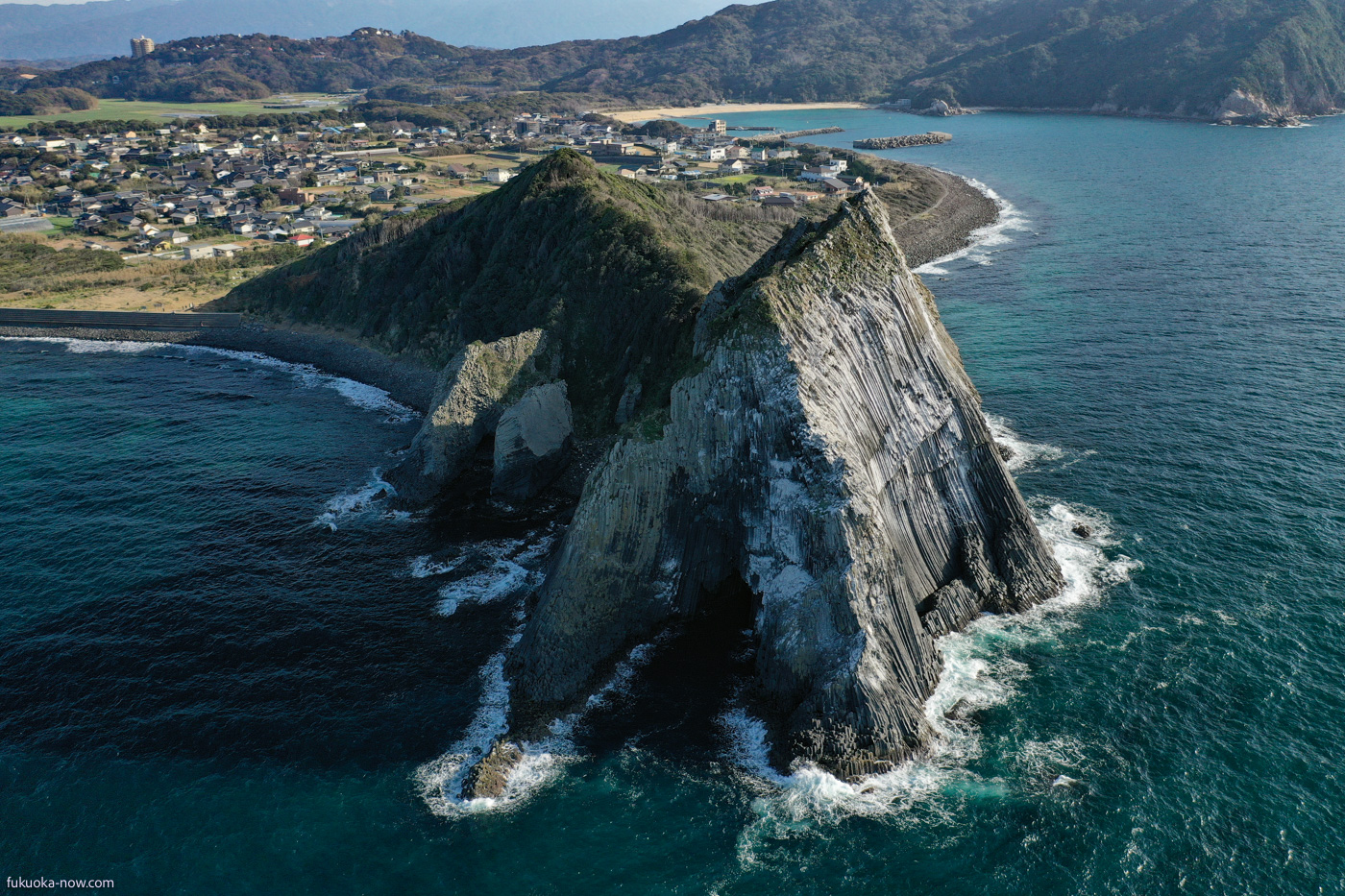
This report is the second part of “Itoshima – One of the Most Liveable Small Cities in the World” Click here to read it. There’s so much more that I would like to share with you about living in Itoshima. Maybe I’ll write a book someday? In the meantime, the Fukuoka Now team and I share reports on Itoshima in the Itoshima Now section of this website and on Instagram. Follow us to learn more about Itoshima!
Nick Szasz
Publisher / Fukuoka Now
Questions about Itoshima? We will try to answer. Use our contact form




